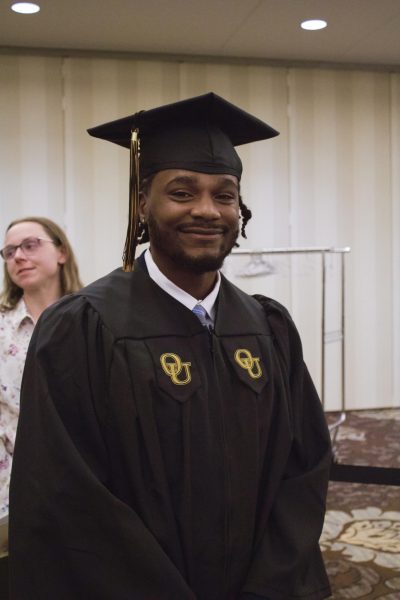‘Silent Conversations’: Art professor chosen to display photography in Paris
When asked to describe the efforts behind her recent photography exhibition in Paris, Associate Professor of Art and Art History Andrea Eis, does not hesitate.
“I feel like I’ve been having a dialogue with the past,” Eis said.
The featured photographs combine images of ancient sculptures and texts from classical literature.
Eis has long been fascinated with both Greek culture and photography. She earned a bachelor’s degree in Classics and Archeology from Beloit College in Wisconsin; a bachelor’s degree of Fine Arts in Film, Photography and Video from the Minneapolis College of Art and Design and a Master’s of Fine Arts in Photography from the Cranbrook Academy of Art.
Her extensive studies have convinced Eis that the past and present are not very different, and certain universal emotions transcend both time and culture.
Eis’ “dialogue” and artwork have transcended too.
Her photographs were selected for a solo exhibition entitled “Silent Conversations” on display at the Grace Teshima Gallery in Paris from Aug. 9-14.
Eis has been featured internationally before: Hungary, China and Greece, in addition to displays across the U.S.
Having been a professor at the university for 28 years and serving as the Art Department Chair for six years, Eis is also a regular artist with the Oakland University Art Gallery and the Anton Art Center where she will be featured next month.
“Each exhibition is special and has a different tone to it,” she said. “This one was definitely a highlight.”
The gallery is located inside Teshima’s home in the historically artistic neighborhood of Montmartre. As owner and operator, the American, Grace Teshima is known for hosting contemporary artists.
There were uncertainties for both Teshima and Eis prior to the exhibition. The women had not met but were connected through another artist.
“I had shown her (Teshima) an image online, but she didn’t really have a sense of what it was going to be like in her gallery,” Eis said.
Teshima was ultimately pleased with the result.
“Saying ‘yes’ (to Eis) resulted in one of the most amazing shows that I’ve ever had,” Teshima said. “Andrea’s work is solidly based on her own scholarly knowledge, experienceand evolution but, the art of it is that it makes antique Greece completely up to date and accessible.”
The exhibition was comprised of 14 pieces, including traditional photographs of varying sizes and photographs printed on fabric which was hung from the gallery’s ceiling. The photographs were organized into three series: Marginalia, Poets and Nostos (Homecoming).
The “Marginalia” series features the handwritten translations of an American woman in the 1900s which were left in the margins of Greek books that Eis studied during her 2008 sabbatical in Athens. For the “Poets” series, Eis selected lines of poetry from American and British writers such as Emily Dickinson, D. H. Lawrence and Edna St. Vincent Millay.
“Nostos,” the final series, draws on the concept of homecoming from war and was inspired by Homer’s “The Odyssey” and Aeschylus’ “Agamemnon.”
“The idea of homecoming is very contemporary, the Greeks with the Trojan War did it and every civilization, every culture, has gone through this. These are human emotions that are repeated,” Eis said.
She believes that this universal connection is one reason her work has resonated with Teshima and the audience present at her artist’s lecture during the exhibition’s premier on Aug. 9.
“We might feel very separate from the Greeks, but in human terms, they are exactly like us,” Eis said. “I’m very interested in those universals, and those emotional moments that can connect to the past.”
This semester, Eis will continue balancing her roles as artist and professor.
“I think it’s important for us (professors) to be role models for our students;to stay committed and be working artists,” she said. “If we ask of our students a level of dedication to art, we have to expect the same of ourselves.”
Eis likes the challenge, though, because it creates a more rewarding career.
“It’s better that it’s not easy,” she said.
—
Contact Senior Reporter Katie Williams via email at [email protected] or follow her on Twitter @kwillicando







